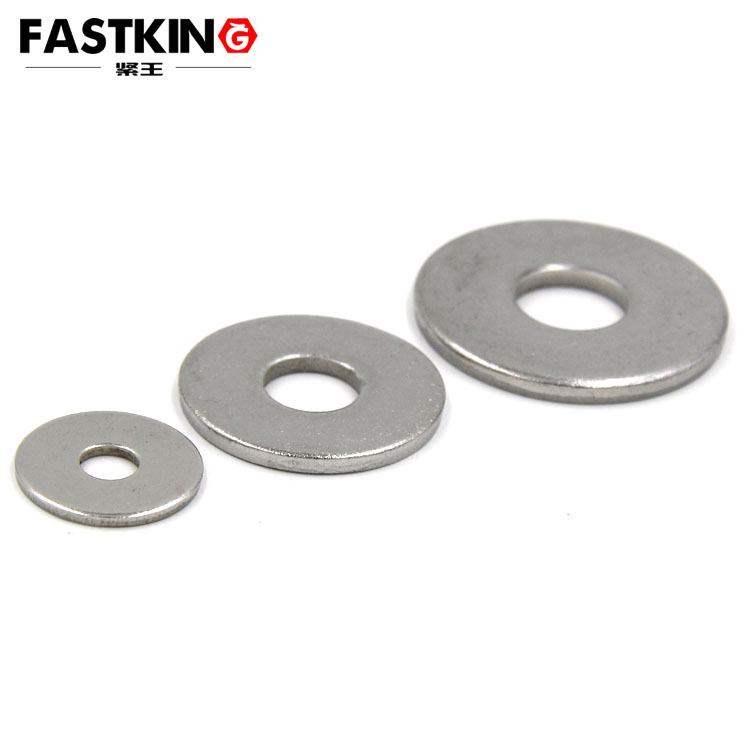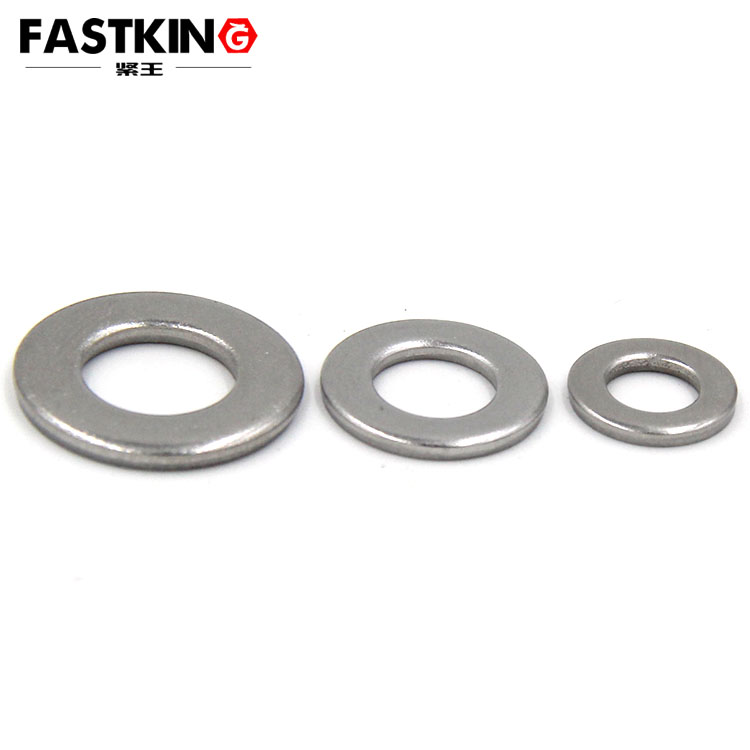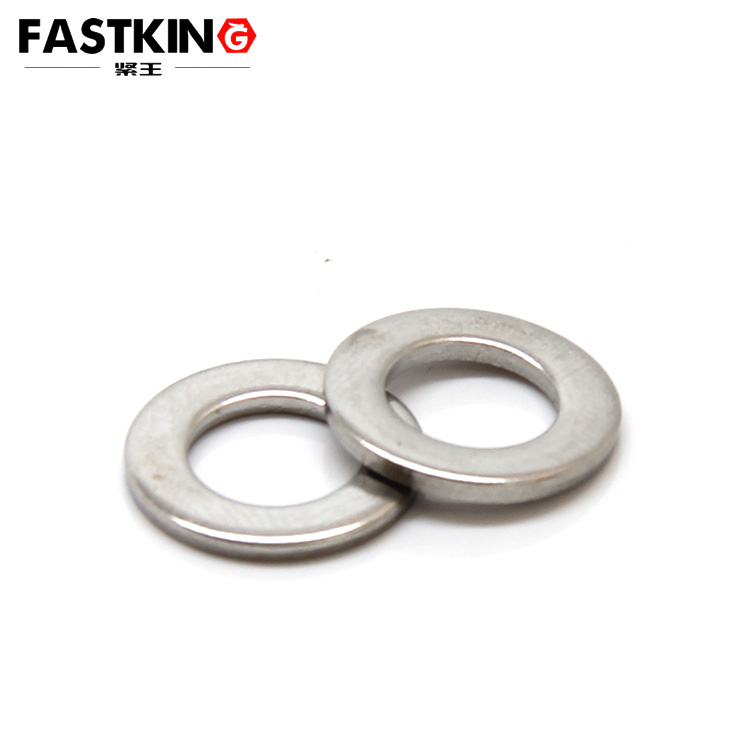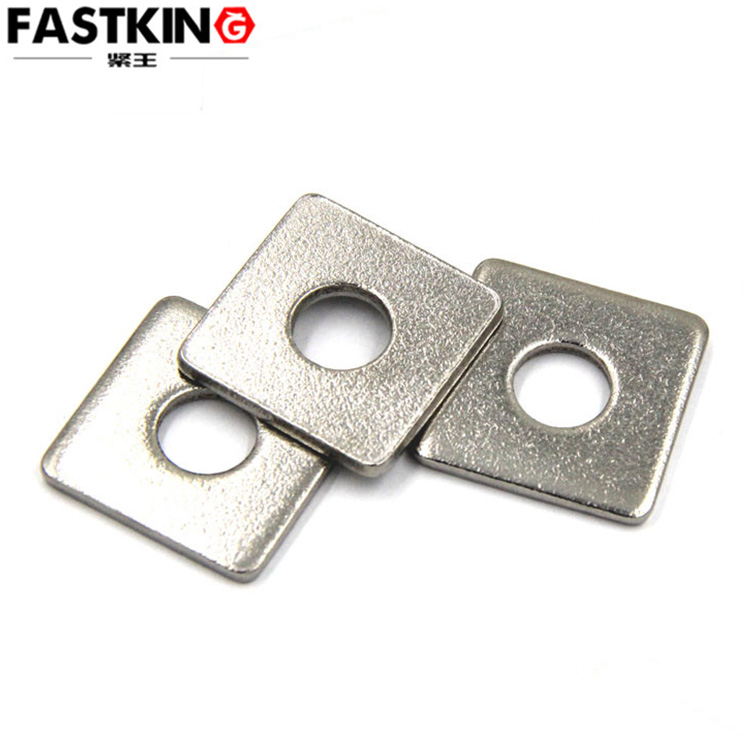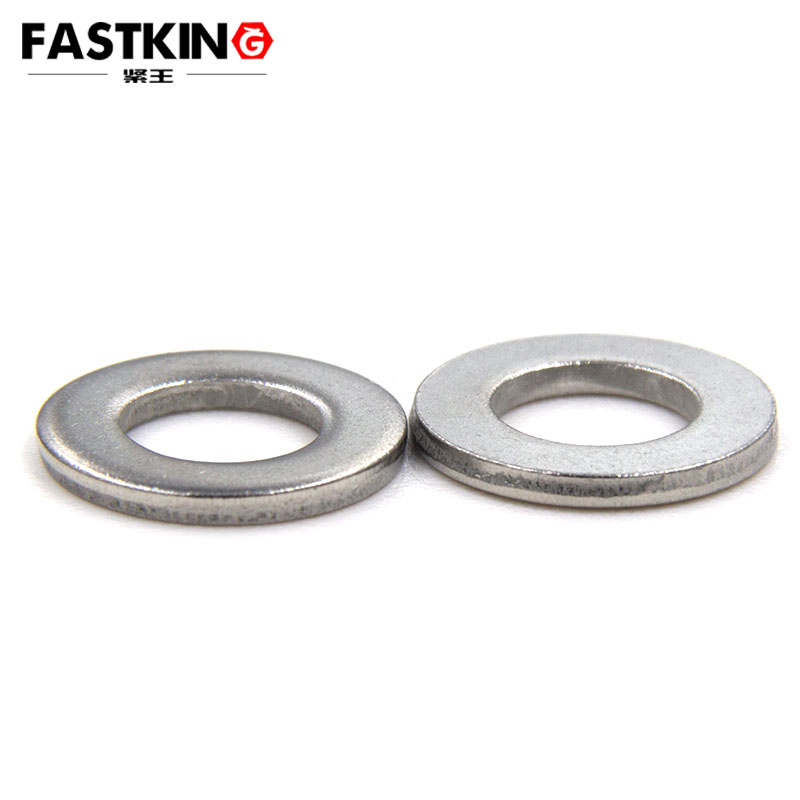Large flat gasket din9021
Material: stainless steel 304316, grade 8.8 high strength and grade 12.9 high strength
Product standard:din9021
It can also support non-standard customization.
From the perspective of manufacturing process, "iron plate stamping" is the core production method for large flat washers, and this technological characteristic also determines its advantages in mass production and cost-effectiveness. During production, first of all, it is necessary to select iron plate raw materials of appropriate thickness according to the specifications of the large flat washer (such as outer diameter, inner diameter, and thickness). Common iron plate materials are mostly ordinary carbon steel; for scenarios with anti-rust requirements, galvanized iron plates or stainless steel plates are selected. Then, the iron plate is formed in one stamping process using stamping equipment combined with special molds - the mold completes two key processes of "blanking the shape" and "punching the hole" simultaneously, enabling the iron plate to instantly form a flat washer structure with a hole in the middle. This stamping process not only has extremely high production efficiency and can realize batch and rapid manufacturing, but also ensures the dimensional accuracy of large flat washers (such as inner and outer diameter tolerances and thickness uniformity). At the same time, it avoids material waste caused by cutting processing, effectively controls the production cost, endowing large flat washers with the advantages of "high cost-effectiveness and stable supply". Therefore, they are suitable for large-scale application in various scenarios that are cost-sensitive and have basic requirements for fastening assistance.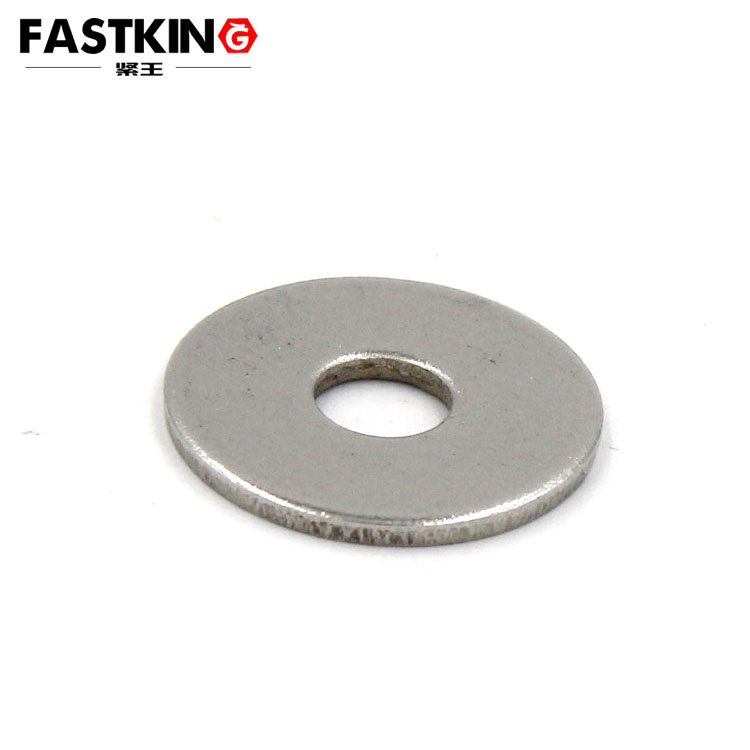
In terms of structural features, the "flat washer shape + hole in the middle" design of large flat washers is simple but implies a clear functional orientation. The "flat washer shape" means that both the upper and lower surfaces are flat planes. This structure can maximize the full contact with the surface of the connected parts and the head of fasteners (such as bolts and screws), laying a foundation for subsequent load dispersion and surface protection. The "hole in the middle" is the prerequisite for its function - the size of the hole must be accurately matched with the rod diameter of the matching fasteners (bolts and screws). It not only ensures that the fasteners can pass through smoothly, but also prevents the large flat washer from shifting during the fastening process due to an excessively large hole diameter, ensuring that it is always in the correct position between the head of the fastener and the connected part to play a role in auxiliary fastening. In addition, according to actual application needs, the shape of large flat washers can also be stamped into special shapes such as squares and hexagons through customized molds, in addition to the common circular shape. However, no matter how the shape changes, the "iron plate stamping" manufacturing method and the core structure of "flat surface + middle hole" remain consistent.
In terms of functions, although large flat washers have a simple structure, they can solve several key problems in mechanical fastening. Firstly, it disperses the load and protects the surface of the connected parts - when a bolt or screw is tightened, its head will exert concentrated pressure on the surface of the connected part. If the material of the connected part is relatively soft (such as aluminum products, plastic parts, and wood), local depression or surface damage is likely to occur. The large flat washer increases the contact area between the head of the fastener and the connected part through its own flat surface, dispersing the concentrated pressure to a larger area, effectively reducing the pressure per unit area, and avoiding deformation or damage to the surface of the connected part due to excessive pressure. Secondly, it fills surface gaps and enhances fastening stability - the surface of some connected parts may have tiny unevenness or gaps. Direct fastening may easily lead to uneven stress on the fasteners, and loosening may occur after long-term use. The flat structure of the large flat washer can fill these tiny gaps, making the contact between the head of the fastener and the connected part closer and the stress more uniform, thereby reducing the fastening risks caused by surface unevenness. In addition, the large flat washer can also assist in positioning and prevent the fastener from shifting - during the installation process, the middle hole can play a certain guiding role for the fastener, avoiding the inclination of the bolt or screw when it is tightened, ensuring the correct fastening direction, and further improving the reliability of the connection.
From the perspective of application scenarios, relying on the characteristics of "iron plate material, basic functions, and high cost-effectiveness", large flat washers have an extremely wide range of applications, covering industrial manufacturing, daily necessities, construction and installation, and other fields. In the industrial machinery field, such as the frame connection of machine tool equipment and the fixing of motor bases, large flat washers are used to disperse the pressure of bolts on the metal frame or base, avoiding fatigue damage to the metal surface caused by long-term concentrated stress. In the automotive manufacturing field, large flat washers are used in some non-critical connection parts of the car body chassis (such as the fixing of protective plates) to protect the surface of the chassis metal plate and enhance the stability of the connection at the same time. In the daily necessities and home appliance field, such as furniture assembly (connection between table and chair legs and panels) and the fixing of washing machine bases, large flat washers can prevent the surface of soft materials such as wood and plastic from being crushed when screws are tightened, and avoid loosening caused by vibration during long-term use. In the construction and installation field, such as the auxiliary connection of steel structure brackets and the assembly of pipeline fixing brackets, large flat washers can cooperate with bolts to disperse the load, ensuring that the connection between the bracket and the wall or ground is more stable and reducing the risk of structural deformation.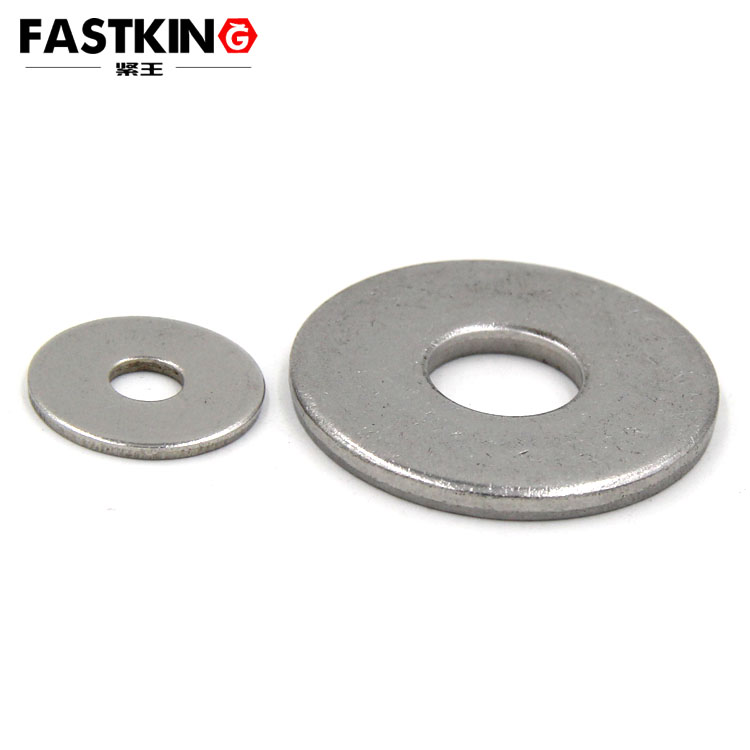
To enable large flat washers to fully exert their functions, correct selection and installation are equally important. During selection, three core parameters need to be focused on: first, dimensional matching - the inner diameter of the large flat washer must be consistent with the rod diameter of the matching fastener (for example, an M8 bolt corresponds to a large flat washer with an inner diameter of approximately 8.5mm). The outer diameter should be selected according to the size of the connected part and the load requirement (the larger the load, the larger the outer diameter of the large flat washer is usually selected to enhance the load dispersion effect). The thickness should be determined based on the connection gap and strength requirements; if it is too thin, it may cause deformation, and if it is too thick, it may affect the connection compactness. Second, material adaptability - for ordinary dry environments, large flat washers stamped from ordinary iron plates can be selected; for humid or slightly corrosive environments (such as outdoor equipment and kitchen appliances), it is recommended to select large flat washers made of galvanized iron plates or stainless steel to avoid rust affecting performance. Third, precision grade - for industrial-grade key connection scenarios, refined large flat washers with small dimensional tolerances and high surface flatness should be selected; for daily non-critical scenarios, large flat washers with ordinary precision can be selected to balance performance and cost. During installation, it is necessary to ensure that the flat surface of the large flat washer is free of deformation and burrs, and the installation position is accurate (it should be located between the head of the fastener and the connected part, with the hole coaxial with the fastener). At the same time, an appropriate tightening torque should be used to avoid deformation of the large flat washer due to excessive torque or failure to exert the load dispersion effect due to insufficient torque.



